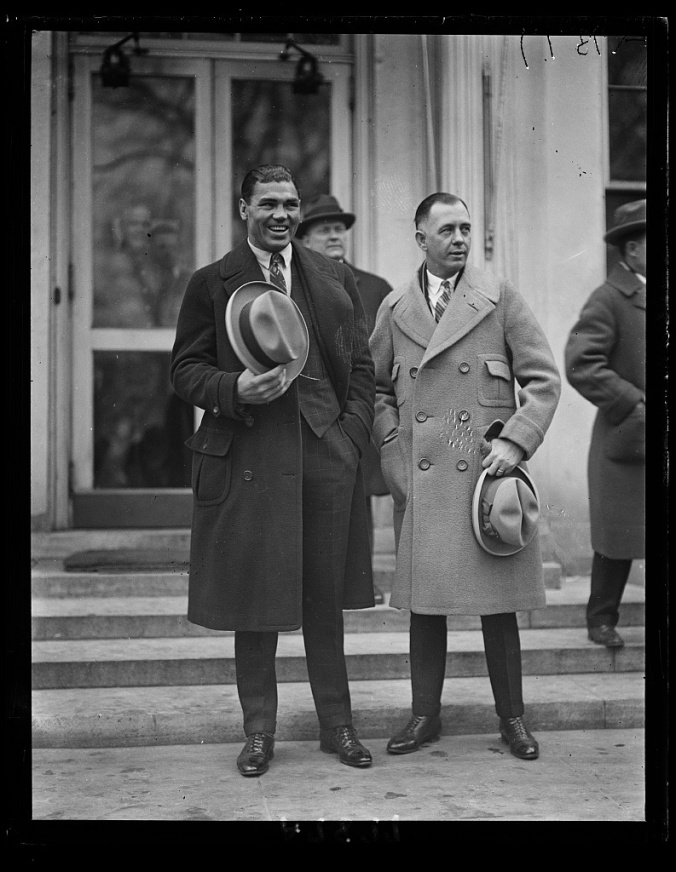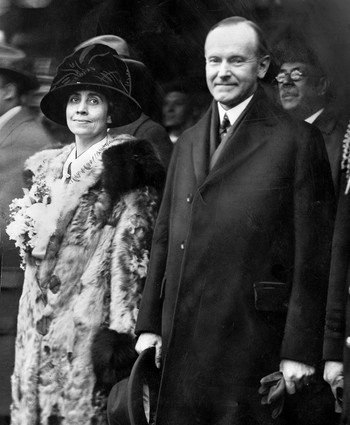
Dempsey and Firpo (1924) by George Bellows
The Twenties remains one of the most vibrant eras of peacetime innovation, cultural achievement, and the leadership to embody it all in iconic personalities which now seemed larger and more glorious than the country — or the decade itself — could contain. The Twenties beheld legendary figures bestriding the world as they would cross a stage, humble but confident, reverent but restless with an energy to accomplish greater things than had ever before existed. Young heroes seemed to develop in abundance on several fronts. A shared cultural bond was emerging in pursuits that defied sectional isolation and narrow outlook ushered in through radio, the automobile, the telephone, the airplane and the camera.
It was a decade of transitions, as almost all decades are, but it was more than that. It was a decade of youthful exuberance and matured experience too but that simplifies the time. Few decades are so replete with pursuits that captured the imagination and encouraged a soar to the stars in the same breath. Lindbergh inspired the conquest of the air, looking forward to a day when we would cross continents in mere hours. Ford accelerated the conquest of the road, presaging a day when seeing the world would be opened to us by the automobile. AT&T was connecting the globe together around the telephone conversation. “Red” Grange was packing in stadiums to watch the new-found thrills of college football. Harold Lloyd was unleashing a subtle revolution in comedy and film itself. Radio was furnishing a cultural language too, programs anyone could access and enjoy. Newscasting had Graham McNamee.
America in the 1920s turned to sports with an enthusiasm that arguably rivals any other era. It sought out these athletic pursuits with a zeal that seemed long-bottled, hungering to do the incredible not with weapons of war but through the prowess of peaceful competition. It pitted wits and athletic abilities against each other to discover the best, confirming that triumph belonged to the winner not merely the participant. Everyone had his loyal fans. It was no less spirited and had its own violent collisions but it gave place and esteem to the victors of the ball field and champions of court and ring. Baseball had its Ruth. Football its Rockne. Golf its Bobby Jones. Tennis its Bill Tilden.
When it came to boxing, it was Jack Dempsey. His successor and rival for the title, Gene Tunney, would likewise receive wide accolades, including a visit to the White House to meet President Coolidge. That would all come later. First, however, it was Jack Dempsey, who would hold the heavyweight title for seven years. Long before Rocky Marciano, it was Dempsey who would earn glory through some 75 fights, losing only 6 of them. Defeating Jess Willard in 1919 for the title, Dempsey would go on to successfully defend it five more times, most notably against French Georges Carpentier in 1921 and Argentine Luis Firpo in 1924.

Jack Dempsey and manager “Doc” Kearns posing for photographers at the White House, 1924. Photo credit: Library of Congress.
In 1924, he would meet his third President, Calvin Coolidge. He had already met Woodrow Wilson and Warren Harding. Here is Dempsey’s honest account of that memorable meeting with Cal. It illustrates the maxim that the first impression rarely captures the whole picture:
“I saw a lot of pictures of Coolidge in the newspapers before I met him. He ought to sue every photographer in the United States. The first time I saw his picture, I thought: ‘There’s a man I wouldn’t trade horses with, for he’d trim me.’ I don’t mean he’d cheat me, but I’d get the worst of it. He looked, in the pictures, like a man who was sly and foxy and sour.
“He reminded me, in his pictures, of sitting around a stove in a grocery store in the country in the winter time, and swapping talk and chewing tobacco, and in comes the shrewdest, smartest farmer in the county, and everybody respects him, but you can’t like him much, for even when he smiles his face is too shrewd and foxy.
“Well, when I met the President it was a kind of shock, for he’s different. He’s kind of like his pictures, yet he’s not like them at all. That smile that looks so sour in the photographs has got something good and straight about it that seems to come from his eyes, if you know what I mean.
“After I saw him and talked with him, I wouldn’t have been afraid to take him on in a horse trade unless I had it up my sleeve to trim him, and then I’d been afraid of it. He’d be honest, but you couldn’t fool him, and when he’d get mean he’d awful mean. I guess maybe that’s a pretty good sort of man to have running the country.
“We didn’t really say much to each other. Kearns and I went to the White House, and the President’s secretary, Mr. Slemp, introduced us, and I guess I felt a little awkward, and Mr. Coolidge smiled — believe me, it’s a different smile than you expect from his pictures — and shook hands with me, and said:
‘Well, Mr. Dempsey, you’re a creditable champion, and you’re a more popular man than I am.’
“I said, ‘Well, sir, I don’t see how a man could be more popular than to be President of the United States.’
“Then we talked for a few minutes about boxing. Slemp told him I could knock out a man with a two-inch punch — that’s what they said when I went to a scientific laboratory and punched a machine that registered on a dial, but I doubt if it would be true in the ring — and Mr. Coolidge grinned and said, ‘Well, that’s two inches more of a punch that I’d like to get from you.’ And we talked a little more and shook hands and said goodbye.”
It is noteworthy that the 1920s claims so many heroes of culture. It was an era when winning honestly was given due praise, dishonesty due shame, and the development of culture over and above that of politics mattered much more to regular people. That healthy balance was just how Cal would have wanted it.
